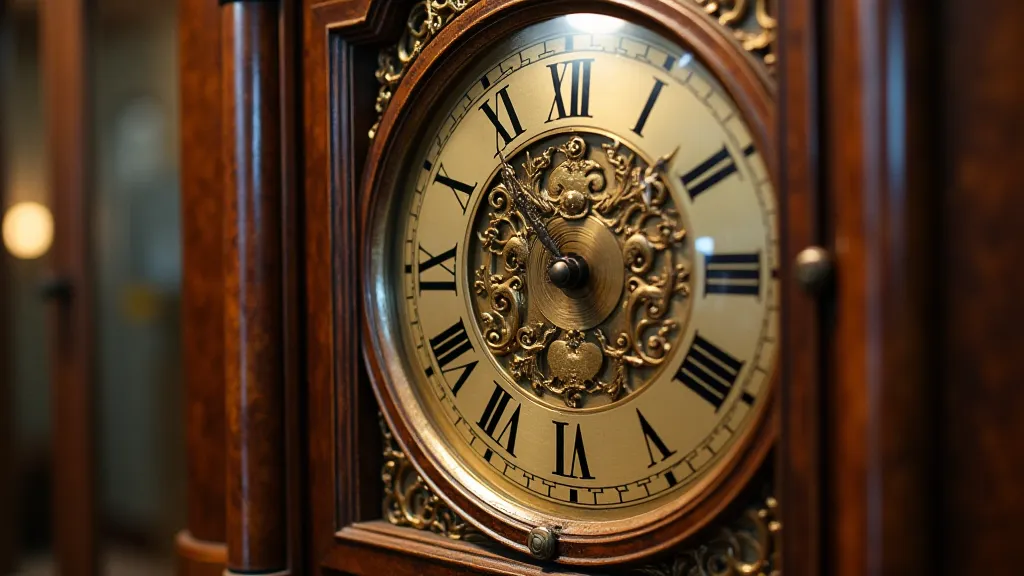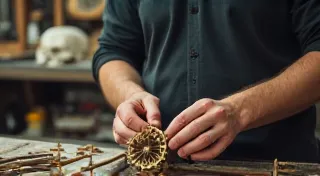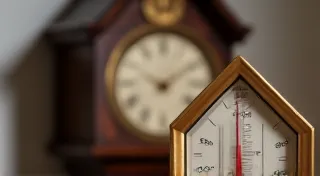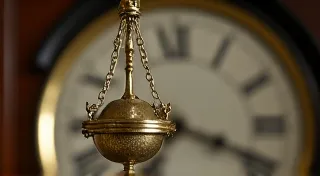Common Clock Oiling Points and Lubrication Techniques
Maintaining an antique clock requires more than just winding; proper lubrication is vital for smooth operation and longevity. Neglecting this crucial aspect can lead to increased wear, sticking gears, and eventual damage. This guide details common clock oiling points and provides essential lubrication techniques for clock enthusiasts.
Why Oil Your Antique Clock?
Antique clocks, often decades or even centuries old, have components that move constantly. Friction is the enemy of these delicate mechanisms. Oil reduces friction, allowing parts to move freely, minimizing wear, and preventing seizing. Correct lubrication also helps dampen vibrations and reduces noise. Understanding the intricacies of these movements is key to proper care, and resources like guides on identifying different types of antique clock movements can be incredibly helpful before attempting any maintenance.
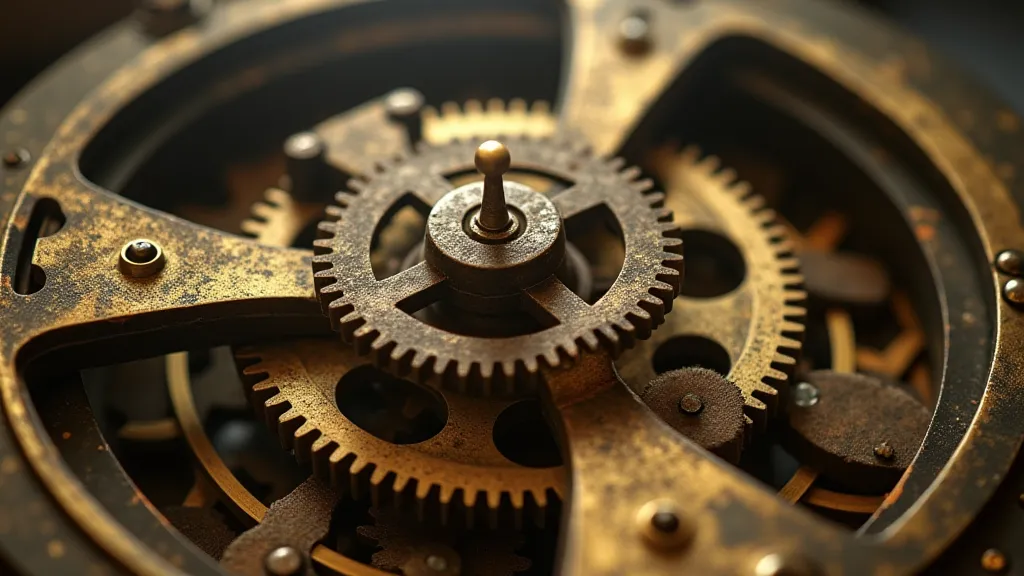
Essential Oils for Antique Clocks
Using the right type of oil is just as important as applying it correctly. Avoid common household oils like WD-40, which can gum up and damage the clock’s intricate parts. Here are some recommended options:
- Clock Oil: Specifically formulated for clock movements, providing excellent lubrication and long-lasting performance.
- Moebius 1000: A popular synthetic clock oil known for its stability and resistance to temperature changes.
- Mineral Oil (Specific Grade): Certain medical-grade mineral oils can be used, but research carefully to ensure it's suitable.
Important: Always use small amounts of oil. Less is more! Excess oil attracts dust and grime, creating a damaging sludge.
Key Oiling Points
Identifying the correct points to oil is essential. Here's a breakdown of typical areas to focus on. Always refer to your clock’s specific repair manual or consult with an experienced clockmaker if unsure. The complexity of antique clock mechanisms often requires specialized knowledge; even seemingly simple tasks can benefit from a deeper understanding of how the entire system operates. For example, understanding the history and evolution of antique American clock movements can provide valuable context when troubleshooting or performing maintenance.
- Pivot Points: These are the most critical areas. Pivot points are where the arbors (shafts) of gears rotate within the plates and bridges. Apply a very small drop of oil to each pivot.
- Gear Teeth: While not as critical as pivot points, a light touch of oil can reduce friction between gear teeth, especially in older clocks.
- Pallet Arbors: The pallets control the escapement, a critical part of the clock's timing mechanism. These require precise lubrication. The escapement’s function is key to the clock’s accuracy, and any issue here can significantly impact timing.
- Suspension Spring: The suspension spring supports the balance wheel. A tiny amount of oil can reduce friction.
- Balance Staff: Similar to pivot points, the balance staff needs lubrication for smooth rotation.
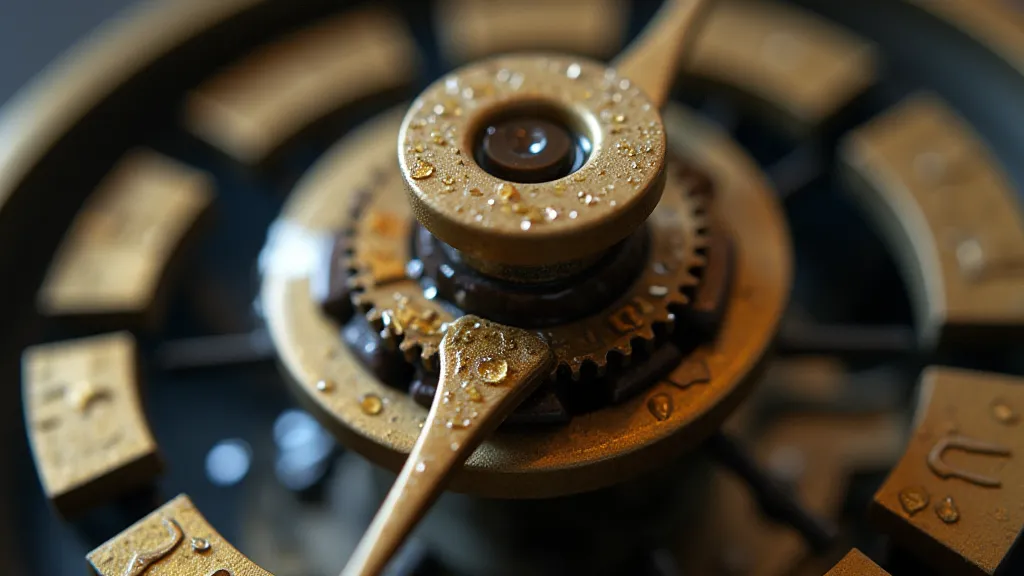
Lubrication Techniques
Applying oil correctly is key to a successful lubrication. Here are a few tips:
- Use an Oiler: A specialized clock oiler allows for precise application. A toothpick or fine needle can be used as a temporary substitute, but exercise extreme care.
- Small Drops: As mentioned, use very small drops of oil. A pinhead-sized drop is often more than enough.
- Avoid Over-Oiling: Over-oiling is a common mistake that can lead to more problems than it solves. A significant issue with over-oiling is that it can attract dust and debris, accelerating wear rather than preventing it.
- Clean First: Before oiling, carefully clean the area to remove old, dried-up oil and debris. This often involves using specialized cleaning solvents and a keen eye to identify hidden problem areas.
- Observe and Adjust: After oiling, run the clock and observe its operation. Adjust the lubrication if necessary. This iterative process allows you to fine-tune the lubrication and ensure optimal performance.
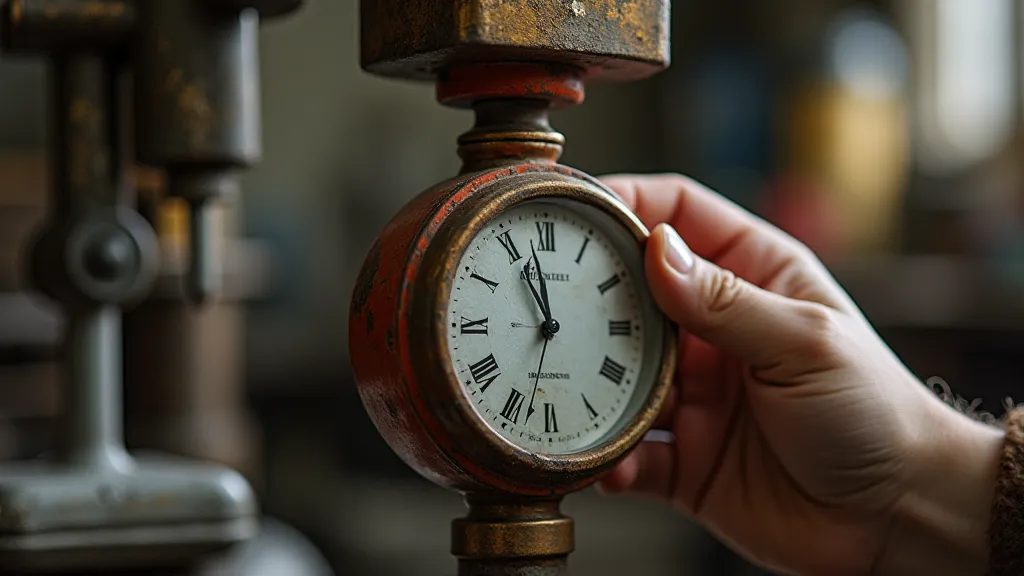
Frequency of Oiling and Long-Term Clock Care
The frequency of oiling depends on the clock's usage, environment, and the type of oil used. Generally, an antique clock should be oiled every 1-3 years. A good rule of thumb is to oil when the clock starts to show signs of sluggishness or unusual noises. Beyond lubrication, the long-term care of an antique clock involves more than just regular maintenance. Understanding how to properly handle and store your clock, avoiding extreme temperatures and humidity, and addressing any issues promptly can extend its lifespan considerably. Sometimes, a clock’s problems stem from issues with its internal components, like the mainspring. Guides on understanding and replacing antique clock mainsprings can be invaluable in these situations.
Furthermore, maintaining proper pendulum swing is also crucial for accurate timekeeping. Ensuring the pendulum’s weight is correct and that the suspension is free from obstruction is essential. Guides to replacing clock pendulums, finding the right size, and ensuring proper swing are good resources to consult.
Troubleshooting Common Clock Problems
Even with meticulous lubrication and care, antique clocks can occasionally encounter problems. Common issues include sticking gears, erratic timekeeping, and unusual noises. When troubleshooting these problems, it's important to systematically examine each component and identify the root cause. Sometimes, the problem isn't with the lubrication itself, but with a worn or damaged part. In these cases, professional repair or replacement may be necessary.
Final Thoughts
Lubricating your antique clock is a rewarding and essential task that contributes to its longevity and beauty. By following these guidelines and exercising patience, you can keep your cherished timepiece ticking accurately for years to come. Remember to always prioritize safety and consult with a professional if you're unsure about any aspect of the process.
